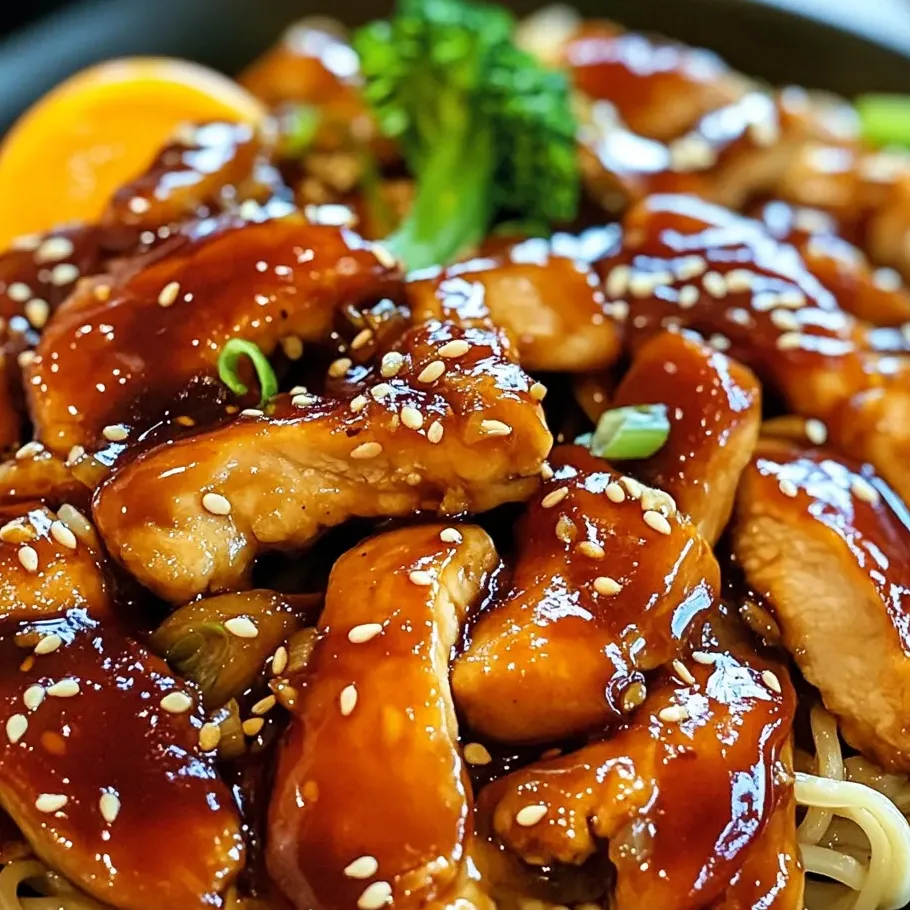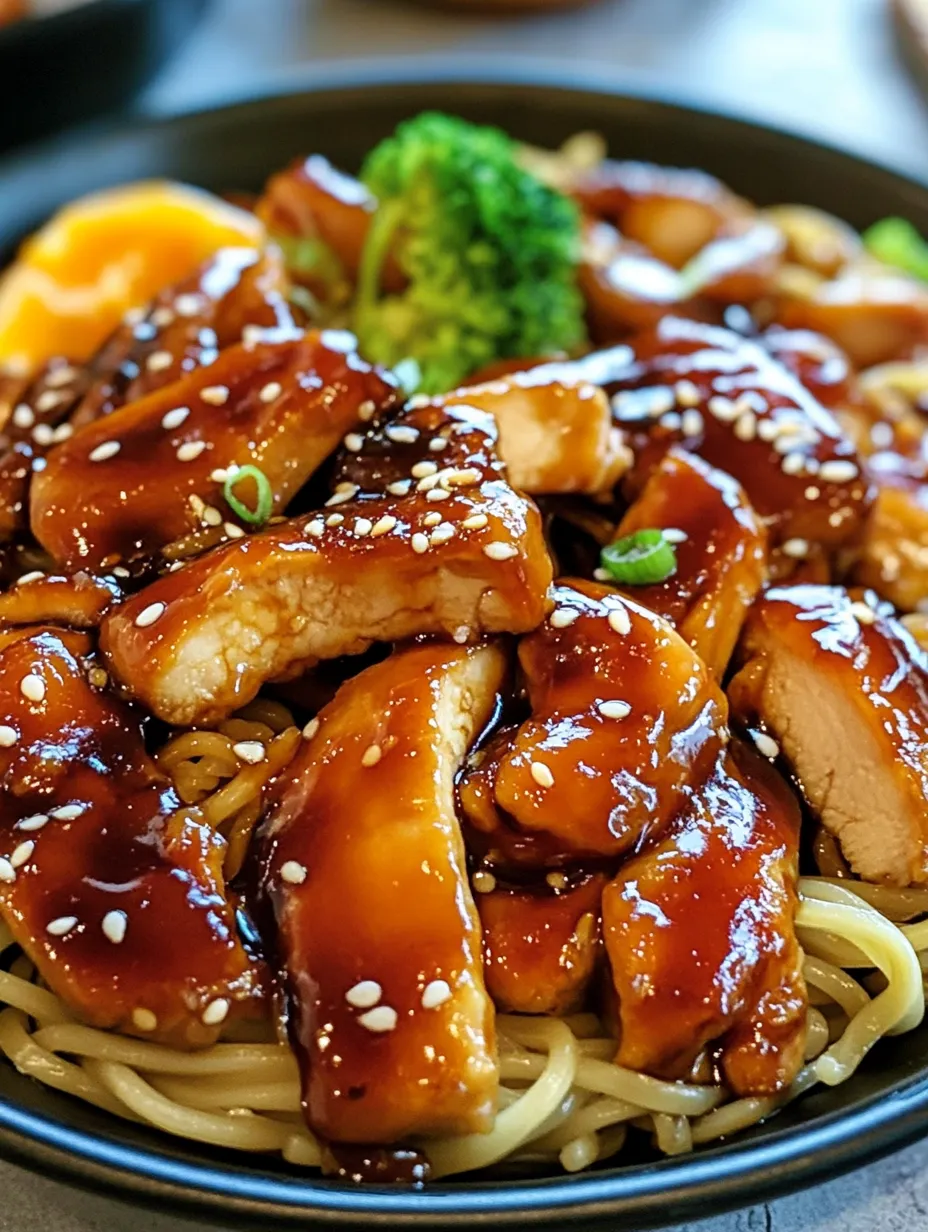 Pin it
Pin it
Imagine twirling your fork around tender chicken pieces, each one glistening with a luscious sweet and savory teriyaki glaze. Nestled amongst these are vibrant, crisp tender vegetables and wonderfully chewy udon noodles. This isn't just a quick meal it's a delightful experience that brings the exciting flavors of your favorite Asian restaurant right to your dinner table. And the best part? You’ll be surprised at how easily you can create this flavor packed dish in your own kitchen.
Unpacking the Flavor: The Key Ingredients
- Chicken: Your Protein Powerhouse: For the most succulent results, boneless, skinless chicken thighs are often preferred.
- Udon Noodles: The Essential Chew: These thick, white wheat noodles are the classic choice for this dish.
- Salt and Pepper: The Fundamental Seasoning: These two simple yet essential seasonings are crucial for enhancing the natural flavors.
- Vegetable Oil: The Stir Fry Workhorse: Use an oil with a high smoke point like vegetable, canola, or peanut oil.
- The Vibrant Veggie Mix: A Rainbow of Goodness: This recipe calls for sliced onion, julienned carrots, broccoli florets, and shredded cabbage.
- Garlic and Ginger: The Aromatic Duo: Freshly minced garlic and grated ginger form the aromatic backbone.
- Green Onions: A Fresh and Flavorful Finale: Thinly sliced green onions serve as a perfect fresh garnish.
- Sesame Seeds: Nutty Crunch Perfection: A sprinkle of toasted sesame seeds provides a wonderful nutty flavor and textural contrast.
- The Homemade Teriyaki Sauce: The Soul of the Flavor: This homemade teriyaki sauce offers a perfect balance of sweet, savory, and tangy notes.
Your Culinary Journey: Making Chicken Teriyaki Noodles
- Crafting the Teriyaki Sauce: The Flavor Foundation
- In a small saucepan, whisk together soy sauce, water, mirin, brown sugar, honey, garlic, and ginger. Bring to a simmer, stirring occasionally. Whisk in a cornstarch slurry and simmer until thickened. Set aside.
- Marinating the Chicken: Infusing Flavor Deep Within
- Season bite sized chicken pieces with salt and pepper. Pour about 1/4 cup of the prepared teriyaki sauce over the chicken and toss to coat. Marinate in the refrigerator for at least 15 minutes.
- Cooking the Chicken: Achieving Tender Perfection
- Heat vegetable oil in a wok or large skillet over medium high heat. Add the marinated chicken in a single layer and stir fry until cooked through and lightly browned. Transfer the cooked chicken to a clean plate and set aside.
- Stir frying the Vegetables: Creating a Colorful Medley
- Add onion and carrots to the wok and stir fry until the onion softens. Add broccoli, cabbage, garlic, and ginger and continue to stir fry until crisp tender.
- Cooking the Udon Noodles: Achieving Al Dente Perfection
- Cook udon noodles according to package directions until al dente. Drain and rinse briefly under cold water.
- Combining the Elements: A Flavorful Harmony
- Add the cooked chicken, udon noodles, and remaining teriyaki sauce to the wok with the vegetables. Toss gently but thoroughly to coat everything evenly. Stir fry until heated through and the flavors have melded.
- Garnishing and Serving: The Finishing Flourish
- Transfer the chicken teriyaki noodles to individual serving bowls. Garnish generously with thinly sliced green onions and a sprinkle of toasted sesame seeds. Serve immediately and enjoy!
 Pin it
Pin it
Tips and Tricks for Culinary Success
Even Cuts, Even Cooking: Cut chicken into roughly the same size pieces.
The Magic of a Longer Marinade: Marinate chicken for longer for a more intense flavor.
Mastering the Toss: Use chopsticks or tongs to gently toss noodles.
Veggies Your Way: Feel free to experiment with other vegetables.
Noodle Variety: While udon is traditional, try other Asian noodles or even spaghetti.
Protein Power Up: Enhance protein with shrimp, beef, or tofu.
Garnish for Glamour and Flavor: Elevate with peanuts, cilantro, or Sriracha.
Shortcut for Busy Days: Use a good quality store bought teriyaki sauce.
Make it a Complete Feast: Serve with rice, spring rolls, miso soup, edamame, or cucumber salad.
Storage and Reheating: Keeping the Flavor Alive
To Store:
Allow leftovers to cool completely before storing in an airtight container in the refrigerator for up to 3 to 4 days. Consider storing components separately.
To Freeze:
Freezing can affect the texture of noodles and vegetables. Store in a freezer safe container for up to 3 months. Thaw in the refrigerator overnight before reheating.
 Pin it
Pin it
To Reheat:
Reheat in a skillet over medium low heat (add a splash of broth or water if needed) or in the microwave until heated through. Reheat components separately if stored that way.
More Chicken Dinners to Expand Your Repertoire
Chicken and Cornbread Casserole
Creamy Chicken Stroganoff
Fragrant Moroccan Chicken
Cheesy Chicken Enchilada Casserole
Frequently Asked Questions
- → Can I substitute chicken breast for the chicken thighs?
- Yes, you can substitute chicken breast for thighs, though the result will be slightly less juicy. If using breast meat, cut it into similar bite-sized pieces but reduce the cooking time by 1-2 minutes to prevent it from becoming tough. Consider marinating the chicken breast for closer to an hour (rather than just 15 minutes) to help it stay moist during cooking. The flavor will still be delicious, just with a slightly different texture.
- → What can I use if I don't have mirin?
- If you don't have mirin (Japanese sweet rice wine), there are several substitutes you can use: 1) Mix 2 tablespoons of dry white wine or rice vinegar with 1 teaspoon of sugar; 2) Use 2 tablespoons of sweet marsala wine; 3) Use 2 tablespoons of dry sherry with a pinch of sugar; or 4) In a pinch, use 2 tablespoons of apple cider vinegar with 1/2 teaspoon of sugar. While none of these will exactly replicate mirin's unique flavor, they'll provide the necessary sweetness and acidity for the sauce.
- → Can I make this dish ahead of time?
- Yes, this dish works well for meal prep! You can prepare the teriyaki sauce up to a week ahead and store it in the refrigerator. The vegetable and chicken components can be cooked 1-2 days ahead and stored separately. For the freshest taste, cook the noodles just before serving, then reheat the chicken and vegetables in a wok, add the cooked noodles and sauce, and toss everything together. If storing fully assembled leftovers, they'll keep well in the refrigerator for 3-4 days - just add a splash of water when reheating to refresh the sauce.
- → What other vegetables work well in this recipe?
- This recipe is incredibly versatile when it comes to vegetables! Good additions or substitutions include bell peppers, snow peas, sugar snap peas, mushrooms, baby corn, water chestnuts, bok choy, or spinach. Aim to maintain a similar overall volume of vegetables (about 4-5 cups total) and consider the cooking time of each - add firmer vegetables earlier and quick-cooking ones like spinach at the very end. This flexibility makes it perfect for using whatever seasonal vegetables you have on hand.
- → Can I make this dish gluten-free?
- Yes, you can easily make this dish gluten-free! Replace the regular soy sauce with tamari or gluten-free soy sauce. For the noodles, substitute rice noodles, 100% buckwheat soba noodles (check labels as many contain wheat), or gluten-free udon alternatives. Also double-check that your mirin is gluten-free, as some brands may contain small amounts of wheat. With these simple swaps, you'll have a delicious gluten-free version that maintains all the flavors of the original.
